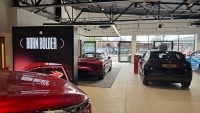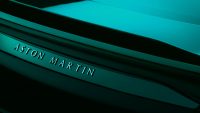Two new reports reveal that a modern diesel car pumps out more toxic pollution than a bus or heavy truck, a situation described as a ‘disgrace’ by one MEP.
New data shows that effective technology to cut nitrogen oxides (NOx) pollution exists, but that car manufacturers are not implementing it in realistic driving conditions.
Diesel cars tested in Norway produced quadruple the NOx emissions of large buses and lorries in city driving conditions, according to the Norwegian Centre for Transport Research, reported The Guardian.
Another study for Transport for London showed that at a small car in the ‘supermini’ class emitted several times more NOx than most HGVs and the same amount as a 40-tonne vehicle.
The issue of NOx pollution, thought to kill 23,500 people a year in the UK alone, has risen up the automotive agenda following the VW scandal amid revelations that cars produce far more NOx on the road than in lab tests, though without using any ‘cheat devices’.
The failure to reduce NOx emission in the real world means road transport is ‘by far the largest contributor’ to illegal levels of NOx in many parts of the country, the UK government has said.
‘It is disgraceful that car manufacturers have failed to reduce deadly emissions when the technology to do so is affordable and readily available,’ said Catherine Bearder, a Liberal Democrat MEP and a lead negotiator in the European parliament on the EU’s new air quality law.
‘The dramatic reduction in NOx emissions from heavier vehicles is a result of far stricter EU tests, in place since 2011, that reflect real-world driving conditions. If buses and trucks can comply with these limits, there’s no reason cars can’t as well.’
‘It is crackers,’ said emissions expert James Tate from the University of Leeds. His own research, which uses roadside equipment to measure passing traffic, also shows the latest diesel models cars produce at least as much NOx as far heavier buses and trucks.
Tate said the reasons car manufacturers were not implementing the NOx reduction technology on cars were convenience and cost. The most common technology requires a chemical compound known as urea to be squirted into the exhaust gases, but a large urea tank would be heavy while a small one would require frequent refills.
‘It’s not really the image the manufacturers are looking for: you are in your smart suit filling up your expensive car – with urea,’ he said.
In contrast, truck and bus drivers are happy to refill the urea tanks and the additional cost of the technology is easier for buyers of large and expensive vehicles to bear, he told The Guardian.
MORE: Toyota recalls 6.5m cars over faulty window switch
MORE: Ferrari shares soar on first day of trading
MORE: Fiat told to pay up to £22m after EU tax avoidance ruling


































